College Commuter Vol. 2: Campus-Hopping
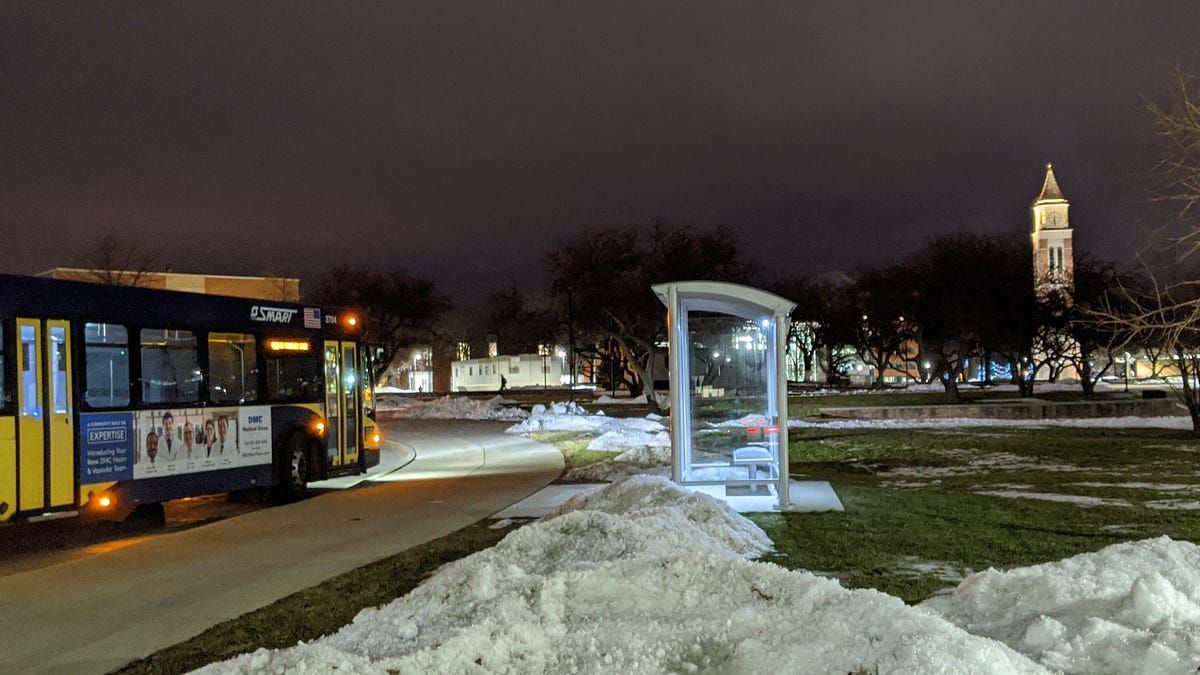
The last bus of the evening arriving at Oakland University.
Update 10/5/20: As of October 5th, SMART has replaced Route 756 with Route 790 (Pontiac Crosstown). Unlike its predecessor, Route 790 runs seven days a week between Oakland University, downtown Pontiac, and the Oakland County Service Center. The new route runs from approximately 6:30am to 9:30pm Monday through Saturday, and until 6:30pm on Sundays. Additionally, OU now has route signage.
This article is unedited from its original publication in February 2020. While parts are no longer applicable, it remains a valid critique of the limitations of public transit in Metro Detroit.
August 26, 2020 • 11:30 am
Last year, I wrote about traveling to class by public transit in Metro Detroit . In short: I start my daily commute to Wayne State University by driving from my condo near Oakland University , about 30 miles north of Detroit in Rochester Hills, to a Park and Ride lot in Troy, a neighboring suburb. This follow-up is a walkthrough of an alternative route that comes close to providing door-to-door service without the need to drive, but falls short in utility. Consider it a case study that shines a light on key areas where our bus system can improve.
Come along as I travel between two of Metro Detroit’s largest public universities using solely existing bus service.
Mission Start: 9:30am, University Circle
It’s Wednesday morning, and I have class at Wayne State from 12:30pm to 4:30pm. The weather is clear, traffic is light, and the buses are running their standard weekday schedules.

My route from Oakland University to the Phoenix Center in Pontiac. (Source: SMART )
The First Mile: Getting to OU
The bus stop at University Circle is about three miles by road from my house in Rochester Hills. While driving is fastest (not including parking time — that’s another story), it’s possible to walk or bike there. Rochester Hills and Auburn Hills both excel at paving dedicated paths beside main roads, and there are plenty of places to securely rack a bicycle on campus. As an undergraduate, I did this a few times when the weather allowed.
Connecting to FAST
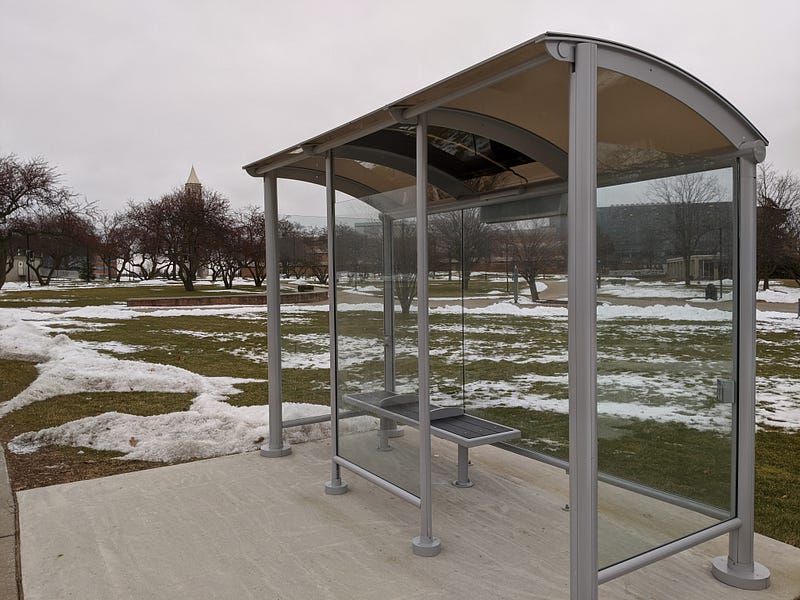
Oakland University’s only city bus stop.
My trip begins on the #756, Pontiac-Perry-Opdyke to the Phoenix Center. A shelter was constructed at the traffic circle a couple years ago, but there’s no other signage. Before the shelter was built, I only knew the bus served campus because I happened to see it pull in.
The 25-minute trip goes smoothly, taking me past stops at Auburn Hills City Hall and Oakland Community College. I make it to the Phoenix Center in downtown Pontiac for a short, five-minute transfer to the 10:10 southbound FAST Woodward.
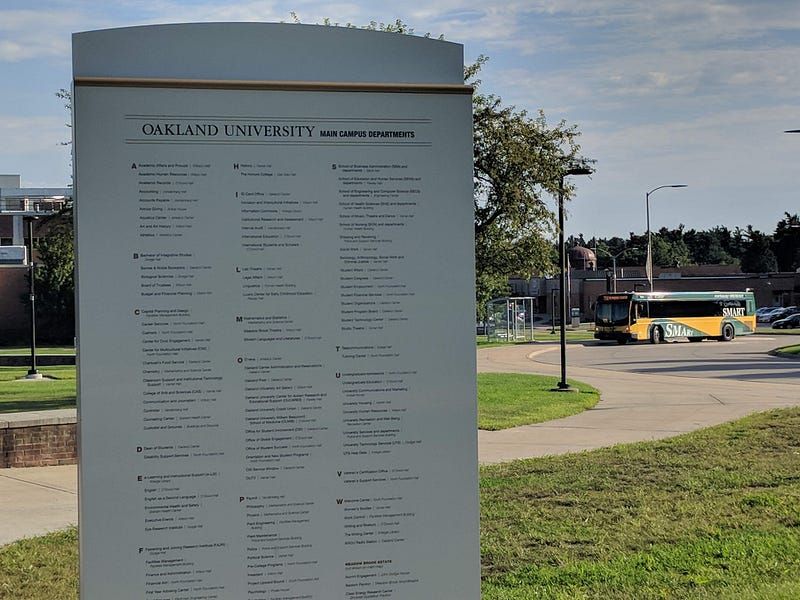
The #756 in the summer.
The Phoenix Center: North Metro Detroit’s Busiest Transfer Point
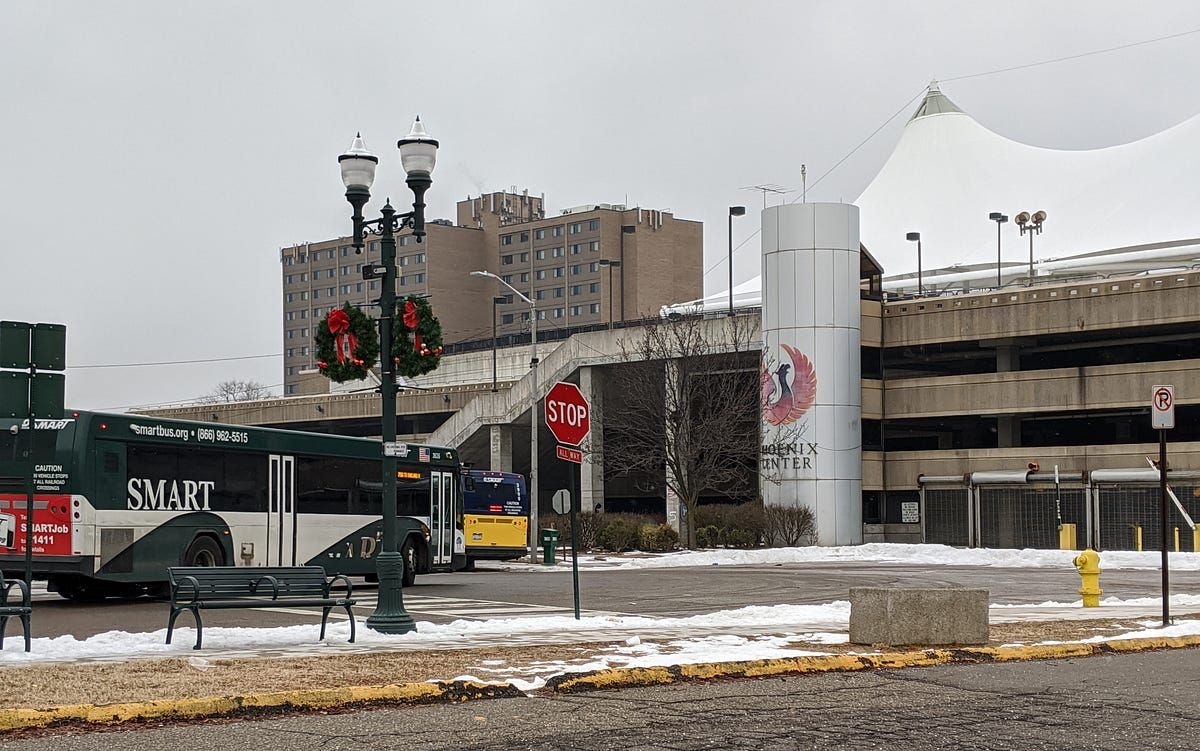
Buses pulling into Downtown Pontiac’s bus stop.
The Phoenix Center is the northern terminus of FAST Woodward #462, one of Metro Detroit’s four express city-to-suburb bus routes, and serves five local routes including the 756. In 2012, the city narrowly avoided the demolition of this parking garage and former concert venue and is currently exploring plans for revitalization .
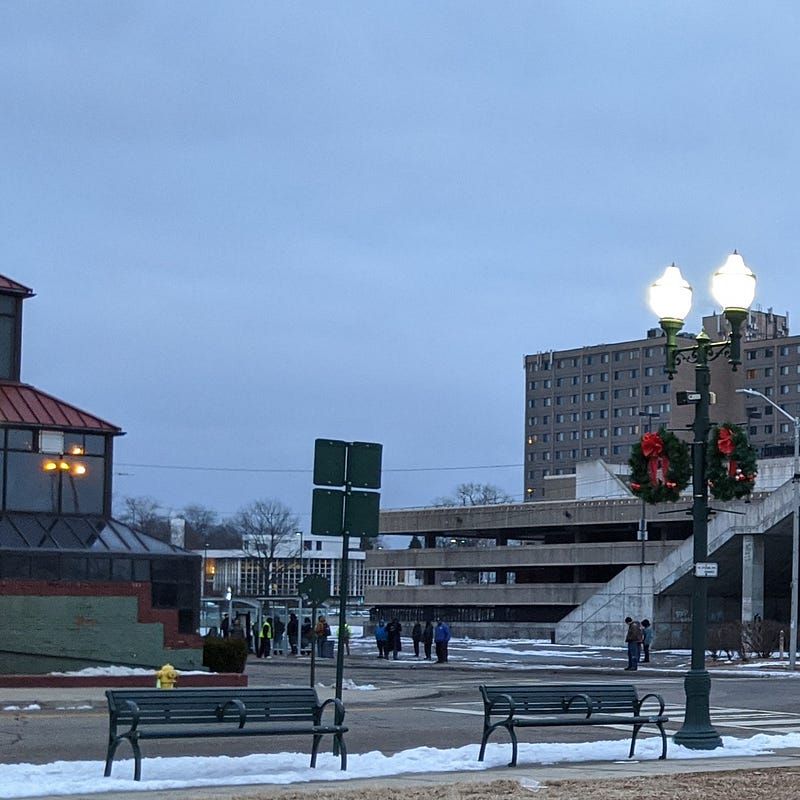
Many riders wait for a Detroit-bound bus at the Phoenix Center during the afternoon rush hour.
This busy stop is complete with two shelters, signage, and a guidemap; however, it’s a block removed from most downtown businesses, so other than the seasonal queue for a popular Halloween attraction there’s very little non-rider foot traffic passing by. Contrast that with other stops along the Woodward corridor which are directly in front of businesses and high traffic areas.

A stop along the same route in Ferndale, further south, which is better integrated with the streetfront. SMART plans to roll out these improvements at more locations. (Source: OutdoorLink )
The views from Pontiac’s downtown bus stop include Lot 9, the currently vacant Phoenix Center, and the alleyway behind Pontiac’s night venues. It doesn’t share the same feeling of new growth and development as the portion of the Saginaw Street corridor a block north. The stop is functional as it is, but it can be improved to make riders feel safer and more welcome.
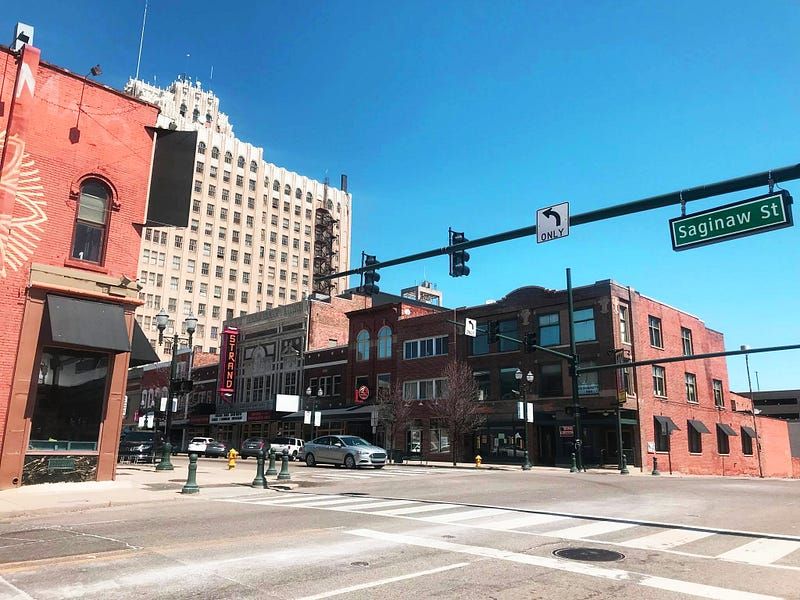
Saginaw Street in Downtown Pontiac, with the Phoenix Center out of frame one block to the south. (Source: Main Street Pontiac )
The Regional Transit Authority of Southeast Michigan , our umbrella organization of transit-planning power, attempted to address this back in 2016. A proposed regional transit plan included a “Pontiac Station” concept which would’ve moved the stop from outside the Phoenix Center to the west side of the Saginaw and Pike intersection, closer to the businesses that generate downtown Pontiac’s foot traffic. Unfortunately, this plan as a whole failed due to a lack of necessary region-wide support . A new attempt at a 2020 plan is in the works using a different approach .
A computer rendering of the 2016 proposal for Bus Rapid transit along Woodward, which included a Pontiac Station concept. (Source: Regional Transit Authority on YouTube )

The same intersection, looking directly north. The RTA proposed BRT stop would’ve been to the left. (Source: Google Street View)
FAST: Pontiac to Detroit
From this point on, things are pretty much the same as the Troy route other than spending 10–15 more minutes onboard FAST. WiFi, study time, limited stops — the works. The bus is timely and, south of Birmingham, makes exactly the same stops at the #461.
The whole commute including the transfer time took me about an hour and 20 minutes. A little slower than driving, true, but it’s time better spent and money saved.
The Return Trip: Rush Hour
The 4:50pm FAST #462 is the first scheduled to arrive after my Wednesday class ends, and shows up at 4:54. Considering the buses aren’t separated from rush hour traffic in downtown Detroit, this isn’t bad at all. I make it back to Pontiac around 5:50pm, which gives me ten minutes to comfortably catch the 6:00pm Eastbound #756 back to Oakland.
I tested this a second time on a Friday, when ridership is much higher and traffic is heavier, and I’m happy to report that I still made the transfer with ease. The schedules are well coordinated.
This all sounds great… So why do you drive to Troy?
Here’s the part where I have to put my criticism cap on and talk about what doesn’t work. Chief complaint: The #756 schedule. This is an hourly bus on weekdays, and does not run at all on Sundays.
The first departure from OU on a weekday is at 6:38am, which would get me to the Phoenix Center just before 7:10. The next scheduled FAST is 7:32, which arrives at Wayne State at or after 8:31. On days I have 8:30am classes, this is a no-go.
The last departure from the Phoenix Center on a weekday is at 6:00pm sharp. To make this transfer, I have to be on the 4:50 FAST out of Detroit. If I need to stay in Detroit after class — or if I just want to spend some of my free time downtown — I can’t leave my car at Oakland or I would be stranded. Meanwhile, by leaving my car at a stop directly serviced by FAST in Troy, I can stay downtown until nearly 2:00am Monday through Saturday and still have transit available to get me to where I parked.
I could drive directly to Pontiac instead, but the city doesn’t have a Park and Ride (and really, they shouldn’t have a free parking lot in the middle of their urban downtown). $3 to $12 for parking daily adds up very quickly and nullifies any cost-saving benefit riding the bus would offer me.
The need to transfer in and of itself is an issue when the alternative is nonstop service. Although I had a good experience, buses can end up running late the same way traffic can build up on the highway. If I miss my bus in Troy or it doesn’t show up for some reason, I can still get to Detroit because I still have my car with me. If I miss the transfer in Pontiac, best case scenario is I’m delayed for 30 minutes, worst case scenario I’m late to class. The shorter drive isn’t worth the risk.
Problems with Inclusivity
I’m a non-disabled car owner with access to a smartphone for hailing a rideshare or calling a friend if necessary. If my bus doesn’t show up or I miss a tight transfer, for the most part it’s an inconvenience rather than an emergency. I’m what fellow transit advocates call a “choice rider” — adequate bus service is not an absolute necessity for me to get where I need to from day to day, but it makes life easier and less expensive.
Instead of looking at this issue from my perspective, let’s step into the shoes of a hypothetical rider with a physical disability who has no access to a private vehicle, and let’s pretend they live about three miles from Oakland, like I do. They want to make the same trip I just did.
Getting to and from OU is a problem. It’s nearly an hour walk to go three miles, which may not be an option for them.

I can solve the first / last mile problem by driving or biking. Many people do not have this ability.
SMART, our suburban transportation authority, does offer paratransit service as a last-mile solution, but this has to be scheduled and requires an additional fee even if you have a monthly bus pass. It’s less inclusive than a standard fixed route. Outside the #756, we don’t have any of those in Rochester Hills .
Here’s why this is important: There are real riders in this situation across our region. There are many with disabilities who need to get to school and work in southeast Michigan communities like my own which have opted out of public transportation. Robust fixed-route service is essential to giving them equal and fair access to destinations across our region.
In Summary: Key Takeaways
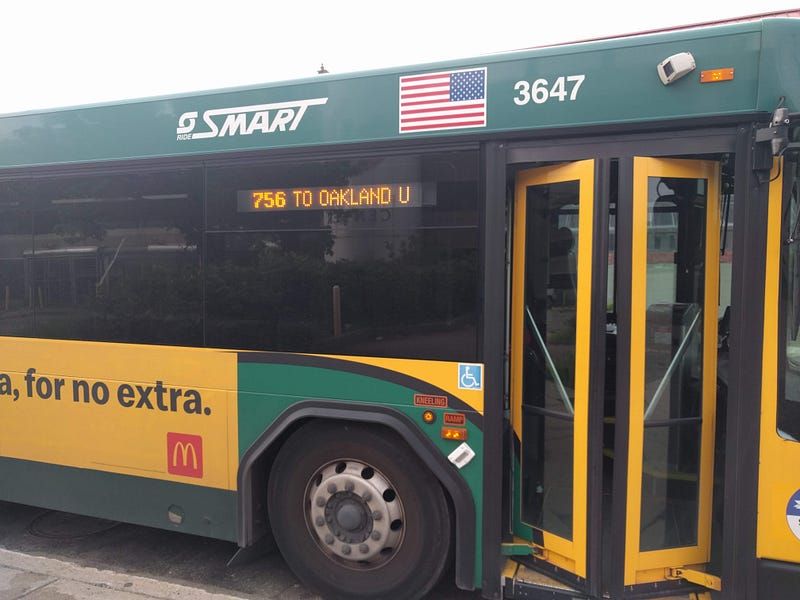
SMART #756 to Oakland University.
More frequent service, better awareness and presentation
FAST routes are the role model; they’re high-frequency, nearly all-day express transit lines that serve multiple communities. They have their own branding and clear, informative signage at most stops that tells riders when they run and where they go. In their first three months of operation, they saw a 20% increase in ridership , and recent reports show increases as high as 90% along the Woodward corridor. We should apply this to select local routes that connect to FAST as well, especially ones that serve colleges with residence halls and students taking night classes. Parts of our region can also do a better job of bringing bus stops closer to destinations, rather than hiding them in less-traveled locations.
Service to all, not a select few
The largest hurdle to overcome in regional transit equity here in Metro Detroit is a political one; some community leaders are failing to consider the big picture, which hurts everyone. At the very least, residents should have a vote in these decisions rather than individual city governments controlling how people in our region can get around.
How to Take Action
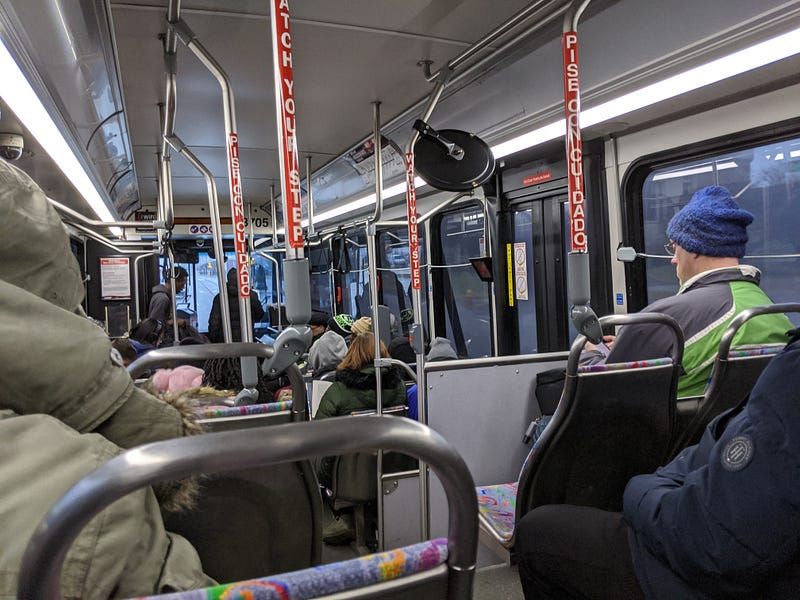
A full FAST bus leaving Detroit during rush hour.
If you’re reading this from Metro Detroit, take a moment today to learn about HB 5229 , our region’s latest attempt at enabling the creation of a more inclusive transit plan that embodies these improvements. Write or call your local policymakers and share your support, or ways in which state lawmakers might improve the bill.
Together, we can work to move transportation in our region forward this year.
 Corey
Corey 